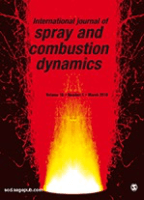
International Journal of Spray and Combustion Dynamics
Scope & Guideline
Igniting Knowledge in Automotive and Energy Engineering
Introduction
Aims and Scopes
- Combustion Dynamics and Instabilities:
The journal emphasizes the study of combustion dynamics, particularly the instabilities that arise in various combustion systems. This includes investigations into thermoacoustic instabilities, flame transfer functions, and the effects of flow oscillations on flame stability. - Spray and Atomization Technologies:
Research on spray dynamics, including atomization techniques and the behavior of liquid fuels in combustion systems, is a core focus. This includes studies on droplet dynamics, evaporation rates, and the impact of spray characteristics on combustion efficiency. - Numerical Modeling and Simulation Techniques:
The journal promotes the use of advanced numerical methods, such as computational fluid dynamics (CFD), direct numerical simulations (DNS), and reduced-order modeling to analyze combustion processes. This includes the application of these methods to predict and optimize combustion performance. - Experimental Investigations in Combustion:
Experiments play a crucial role in the journal's scope, with studies that validate theoretical models and simulations. This includes high-speed imaging and other diagnostic techniques to capture combustion phenomena. - Innovative Combustion Systems and Fuels:
The journal explores the development and analysis of novel combustion systems and alternative fuels, focusing on their performance characteristics and environmental impact.
Trending and Emerging
- Thermoacoustic Instabilities and Control:
There is an increasing focus on understanding and controlling thermoacoustic instabilities, which are critical for improving the performance and safety of combustion systems, particularly in aerospace applications. - Advanced Spray Characterization Techniques:
The journal is increasingly publishing research that utilizes cutting-edge imaging and diagnostic techniques to characterize spray dynamics, highlighting the importance of understanding atomization processes in modern combustion systems. - Integration of Machine Learning and AI in Combustion:
Emerging research involving machine learning and artificial intelligence for predicting combustion behaviors and optimizing combustion systems is gaining traction, showcasing the journal's adaptation to technological advancements. - Sustainable and Alternative Fuels:
There is a growing emphasis on the study of alternative fuels and their combustion characteristics, reflecting an industry-wide push towards sustainability and reduced emissions in combustion technologies. - Hybrid Modeling Approaches:
The trend towards hybrid modeling that combines computational fluid dynamics with low-order models or machine learning techniques is becoming more prevalent, indicating a shift towards more efficient and accurate predictive tools in combustion research.
Declining or Waning
- Traditional Combustion Theory:
Research centered on traditional combustion theories and models has become less prominent, as the field shifts towards more complex and dynamic systems that require advanced computational and experimental approaches. - Low-Temperature Combustion Studies:
Studies specifically focused on low-temperature combustion phenomena have declined, possibly due to a growing emphasis on high-temperature and high-pressure combustion scenarios that are more relevant to aerospace and industrial applications. - Basic Fuel Characterization:
While fuel characterization remains important, there has been a noticeable decrease in studies solely focused on basic physical and chemical properties of fuels, as the journal trends towards more integrated studies involving combustion dynamics and performance.
Similar Journals
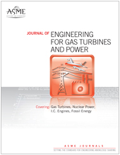
JOURNAL OF ENGINEERING FOR GAS TURBINES AND POWER-TRANSACTIONS OF THE ASME
Driving Excellence in Mechanical Engineering ResearchJournal of Engineering for Gas Turbines and Power - Transactions of the ASME, published by the esteemed American Society of Mechanical Engineers (ASME), is a leading interdisciplinary journal dedicated to advancing the fields of energy engineering, aerospace, nuclear energy, and mechanical engineering. With an impressive history dating back to 1960 and continuing its contributions through 2024, this journal boasts a Q2 ranking in multiple engineering categories, reflecting its strong impact on both academia and industry. Although not an open-access journal, it provides invaluable insights and research findings that cater to the needs of professionals, researchers, and students alike. The journal's ISSN is 0742-4795 with an E-ISSN of 1528-8919, ensuring widespread visibility in the global academic community. Indexed in Scopus, it ranks notably within its fields—21st in Nuclear Energy and Engineering and 51st in Aerospace Engineering—underscoring its relevance and contribution to critical technological advancements. Researchers in this domain will find the journal a vital resource for innovative studies, practical applications, and the latest developments related to gas turbines and power generation.
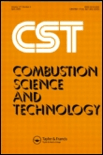
COMBUSTION SCIENCE AND TECHNOLOGY
Fueling Knowledge in Chemical EngineeringCOMBUSTION SCIENCE AND TECHNOLOGY, published by Taylor & Francis Inc, is a pivotal journal in the fields of Chemical Engineering and Chemistry, with a robust history spanning from 1969 to 2024. With an established impact factor and a strong reputation reflected in its Q2 ranking in both Chemical Engineering and Chemistry, this journal serves as an essential resource for researchers and professionals dedicated to the intricacies of combustion processes and energy technologies. The journal also holds commendable rankings in Energy Engineering, Fuel Technology, and Physics and Astronomy, showcasing its interdisciplinary relevance. While currently not an open-access publication, it offers a wealth of knowledge through its meticulously peer-reviewed articles, which are crucial for advancing understanding and innovation in combustion science. With a commitment to promoting rigorous research and fostering scholarly communication, COMBUSTION SCIENCE AND TECHNOLOGY is indispensable for anyone seeking cutting-edge insights into combustion phenomena and their applications in various engineering fields.
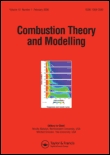
COMBUSTION THEORY AND MODELLING
Unraveling the Complexities of Combustion TheoryCombustion Theory and Modelling is a pivotal journal for researchers and professionals in the fields of chemical engineering, energy technology, and combustion science. Published by Taylor & Francis Ltd, this journal, with an ISSN of 1364-7830 and E-ISSN 1741-3559, provides a platform for disseminating significant advances in our understanding of combustion processes and their applications. With a solid impact factor, as reflected in its Q2 ranking across multiple categories including Chemical Engineering, Energy Engineering, and Modeling and Simulation, it serves not only to enhance theoretical knowledge but also to bridge the gap between theory and practical applications. The journal spans a wide timeline from 1997 to 2024, ensuring that it covers both foundational studies and cutting-edge research. Situated in the UK, the journal actively invites submissions that contribute to the evolving landscape of combustion science, making it an essential resource for academics, industry professionals, and students keen on exploring the dynamics of energy and fuel technologies.
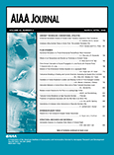
AIAA JOURNAL
Exploring the Frontiers of Flight and Space TechnologyAIAA JOURNAL, published by the American Institute of Aeronautics and Astronautics, stands as a premier peer-reviewed platform for cutting-edge research in the field of aerospace engineering. With an esteemed Q1 classification in the Aerospace Engineering category and a notable rank within the top 20% of its field according to Scopus, this journal has become an essential resource for researchers, professionals, and students alike. Spanning over six decades of impactful scholarship from 1963 to 2024, the AIAA JOURNAL contributes significantly to the advancement of aerospace technologies and methodologies. While it does not offer open access, its rigorous editorial standards and impactful articles ensure that it remains a vital source for those seeking to stay at the forefront of aerospace innovation. Explore the rich tradition of excellence and stay informed on the latest discoveries that shape the world of flight and space exploration.

Journal of Engineering Thermophysics
Unveiling the complexities of thermal processes in engineering.Journal of Engineering Thermophysics, published by PLEIADES PUBLISHING INC, is a premier academic journal dedicated to advancing the field of thermophysics and its applications across a variety of engineering disciplines. With an ISSN of 1810-2328 and an E-ISSN of 1990-5432, this journal offers an essential platform for researchers and professionals to disseminate cutting-edge findings on the interplay between thermal processes and engineering systems. As of 2023, it is recognized within the Q3 category in key fields such as Condensed Matter Physics, Energy Engineering and Power Technology, Environmental Engineering, and Modeling and Simulation. Moreover, the journal contributes to an important dialogue in the environmental sciences, ranking 111 out of 197 in Environmental Engineering, and positions itself prominently within the academic landscape from its establishment in 2007. Although currently not an open-access journal, it facilitates a selective yet impactful communication of research that drives innovation and knowledge in the thermal sciences. For those engaged in understanding the thermal dynamics essential for sustainable engineering solutions, the Journal of Engineering Thermophysics is the go-to resource for published research, reviews, and advancements in the field.

JOURNAL OF ENGINEERING PHYSICS AND THERMOPHYSICS
Illuminating the Path of Engineering Physics ResearchJOURNAL OF ENGINEERING PHYSICS AND THERMOPHYSICS, published by Springer, is a vital resource for researchers and professionals in the fields of engineering physics and thermophysics. With an ISSN of 1062-0125 and an E-ISSN of 1573-871X, this esteemed journal has been disseminating high-quality research since its inception, covering critical advancements in both condensed matter physics and various engineering disciplines. Despite its classification within the third quartile in both Scopus categories for 2023, the journal remains a significant conduit for innovative studies that push the boundaries of knowledge in thermal and physical engineering, with converged years spanning from 1992 to 1997 and 2004 to 2024. The journal does not offer open access, which means subscribers and institutions have exclusive access to its rich content. As the field continues to evolve, JOURNAL OF ENGINEERING PHYSICS AND THERMOPHYSICS plays an essential role in fostering scholarly discussions and supporting the academic community in tackling contemporary engineering challenges.
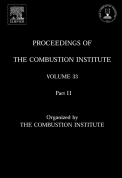
PROCEEDINGS OF THE COMBUSTION INSTITUTE
Transforming Challenges into Solutions in CombustionPROCEEDINGS OF THE COMBUSTION INSTITUTE, published by Elsevier Science Inc, is a premier platform for dissemination of advanced research in the fields of combustion science, engineering, and related technologies. With an ISSN of 1540-7489 and an E-ISSN of 1873-2704, this journal holds a prestigious position within the academic community, as evidenced by its top-tier Q1 rankings in Chemical Engineering, Mechanical Engineering, and Physical and Theoretical Chemistry for 2023. The journal is recognized for its rigorous peer-review process and aims to publish high-quality, impactful research that drives innovation and knowledge in combustion phenomena. Researchers and professionals can engage with cutting-edge findings that address critical challenges and explore novel solutions in this vital area of study. Although it does not offer open access, its subscription model ensures wide accessibility to institutions and experts seeking profound insights into combustion dynamics.

EXPERIMENTS IN FLUIDS
Exploring the depths of fluid behavior and mechanics.EXPERIMENTS IN FLUIDS is a prestigious journal in the field of fluid mechanics, published by SPRINGER, renowned for its rigorous peer-reviewed research and experimental studies that advance the understanding of fluid behavior in various contexts. With an ISSN number of 0723-4864 and an E-ISSN of 1432-1114, this journal has published influential works since its inception in 1983, maintaining a convergence of data and insights crucial for both academia and industry. Its impressive impact factor and ranking in the Q1 category for Computational Mechanics, Fluid Flow and Transfer Processes, Mechanics of Materials, and Physics and Astronomy underscore its significance in fostering high-quality research in these domains. Researchers and professionals benefit from the comprehensive access to experimental methodologies, innovative applications, and cutting-edge results that the journal provides without the Open Access model. The journal's offices located in New York, USA, facilitate its global outreach, making it an essential resource for scholars and practitioners seeking to deepen their expertise in fluid dynamics and related fields.
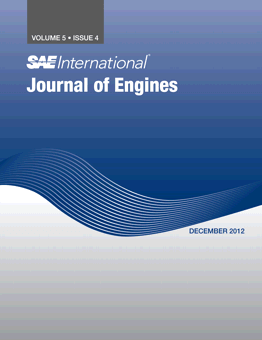
SAE International Journal of Engines
Fueling the Next Generation of Automotive SolutionsSAE International Journal of Engines, published by SAE International, serves as a leading platform in the field of automotive engineering and fuel technology. Established in 2008, this journal has quickly gained recognition, achieving a Q2 ranking in Automotive Engineering and a Q3 ranking in Fuel Technology as of 2023. With the journal's ongoing commitment to advancing the understanding of engine technologies, it encompasses a diverse range of topics including engine performance, emissions, fuels, and innovative technologies driving the automotive industry. Researchers and professionals can benefit from the high-quality peer-reviewed articles that the journal features, while the comprehensive content serves as an invaluable resource for students engaged in automotive studies. Although it does not currently offer open access, the journal's credibility is further reinforced by its respectable Scopus rankings, indicating its significant impact within the academic community. For anyone seeking to stay at the forefront of engine research and automotive advancements, the SAE International Journal of Engines is an essential resource.
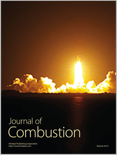
Journal of Combustion
Igniting Innovation in Combustion ScienceJournal of Combustion is a premier academic journal dedicated to the field of combustion science and technology, published by HINDAWI LTD. With an ISSN of 2090-1968 and an E-ISSN of 2090-1976, the journal has been an open-access platform since 2008, ensuring that cutting-edge research is accessible to all. Based in the United States at Adam House, 3rd Flr, 1 Fitzroy Sq, London W1T 5HF, England, the journal publishes articles spanning various relevant disciplines, contributing to knowledge in Chemical Engineering, Fuel Technology, and Energy Engineering. As of 2023, it ranks in the Q3 quartile in Chemical Engineering (miscellaneous) and Fuel Technology, and in Q4 in Condensed Matter Physics and Energy Engineering and Power Technology, highlighting its growing impact and relevance in these fields. Researchers will find valuable insights as the journal converges its findings from 2010 to 2024. With a focus on promoting innovative approaches and exploring new frontiers in combustion research, the Journal of Combustion continues to be an essential resource for academics, professionals, and students committed to advancing the understanding and application of combustion processes.